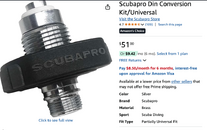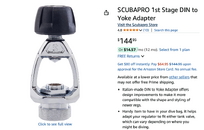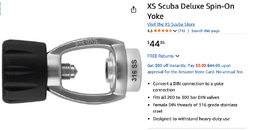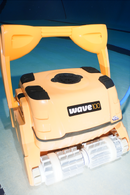I took my new camera system into the scuba center's pool to do some testing. I was the only one there and the manager asked if he could put the cleaning robot in while I played. I said sure. Figuring it would be good subject along with all of my macro critters. I was intent upon my critters and not minding to anything else when I felt a tug. Then a steady pull. Since my hands were on the camera and I am loath to release my camera as many may know I was being pulled about helplessly by the robot. I finally managed to place my camera down and assault the robot whose hose was wrapped around my Mark 11 yoke knob. Actually, it popped free of it's own accord but it was funny.However, the knob on the yoke is a definite entanglement hazard. I was co-teaching a class in the Keys, and my co-instructor used yoke. We were on the Speigle and a single line snagged that knob. He was doing a nice gentle frog kick, which soon morphed into a rather aggressive one. That soon gave way to an intense flutter, which was about to morph into I don't know what, but I had finally gotten over to him and cut the snag with my z-knife. ZOOOOOOOOOOOOM!!!
Again, for those who can make fires by beating rocks together, most companies offer DIN as a conversion kit cheap enough and compared to a yoke adapter is the real thing and the price Delta is minimal. Purchase the yoke version first stage, buy the DIN kit, now you have both or just buy two first stages:








